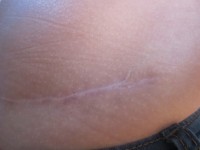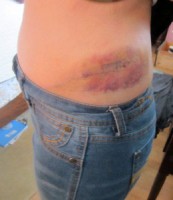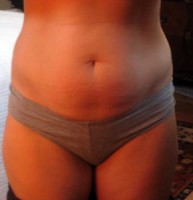Tummy tuck & Pulmonary embolism
Cosmetic surgical procedures, especially tummy tuck do carry the risk of blood clots in the legs and pulmonary embolus. It is possible to do a risk analysis based on age and health history and come up with a ‘score’ to determine your risk for a PE.
You should know that your risk will be higher after a prior episode. At the least, all patients deserve compression hose, and a compression device on the legs during surgery to reduce risk.
Early walking is important, and for some prophylaxsis, medication given just in case, is important early after a procedure. Have a well though out discussion with both your physician and surgeon. Best of luck, peterejohnsonmd (Peter E. Johnson, MD, Chicago Plastic Surgeon)
Tummy tuck and pulmonary embolism

patient safety of Tummy tuck after Pulmonary embolism
I have treated one patient that had a PE just after pregnancy. She had a medical work-up by her hematologist who cleared her for breast augmentation surgery. You are at higher risk than patients that never had a PE, I would strongly consider not doing it, but if you do, you need a work-up by your doctor. (Steven Wallach, MD, New York Plastic Surgeon)
You are at increased risk of another DVT / PE and a higher risk of dying from the tummy tuck. Please go to a hematologist to work up a possible hypercoagulable state. Also, have a venous ultrasound to be sure your veins are clean. (Richard P. Rand, MD, FACS, Seattle Plastic Surgeon)
Tummy tuck and lipo

pulmonary embolism after surgery is possible
I have had several patients that have been very similar to your case. They had a pulmonary embolism related to pregnancy. First of all, it is imperative that get medically cleared for surgery and see a hematologist to make sure they dont think there is added genetic risk for DVT (deep venous thrombosis) and PE (pulmonary embolism). If you are cleared as I suspect, you would then I think it is reasonable to perform conservative liposuction (less than 5 liters) and tummy tuck (abdominoplasty) together. It is important to make sure that your surgeon (and possible assistant) are efficient, i.e. the length of time under anesthesia should not be prolonged. Also all preventive measures such as SCDs (sequential compression devices) are used at surgery. The final thing that I recommend, and our practice has published on, is the use of perioperative lovenox starting 1 hour after surgery for 5 days. This really adds one more layer of caution and prevention to the procedure. (James F. Boynton, MD, FACS, Houston Plastic Surgeon)
Tummy tuck and liposuction after PE

Significantly higher risk to have Pulmonary Embolism if you have one
It is possible to do surgery on you but your risk is increased. It is best to see a hematologist and have a thorough workup for what caused the blood clot, if anything. Then plans can be made to minimize your risk. Without a hypercoagulability workup it would not be wise to do your surgery. (Brent Moelleken, MD, Beverly Hills Plastic Surgeon)
Tummy Tuck after PE
There is a risk of thrombophlebitis and pulmonary embolism with all tummy tucks. This risk is quite low in most patients, especially if having the tummy tuck as an only procedure. With a history of previous tummy tuck, you would definitely be at an increased risk and probably should be treated with Lovenox (a blood thinner) before and after surgery. This would increase the risk of bleeding slightly. As with all procedures, you wuld need to weigh the benefits/risks. (John Whitt, MD (retired), Louisville Plastic Surgeon)




